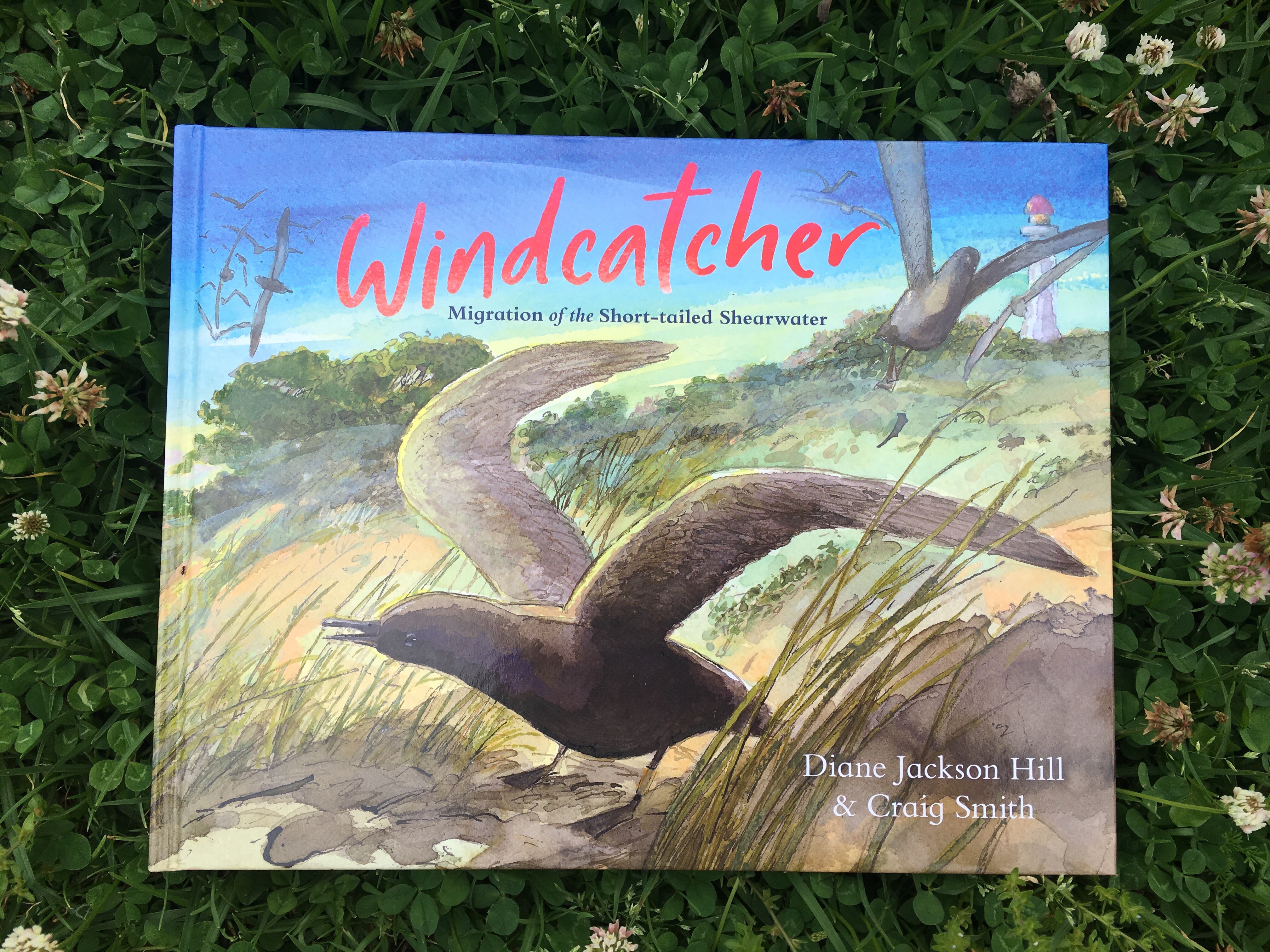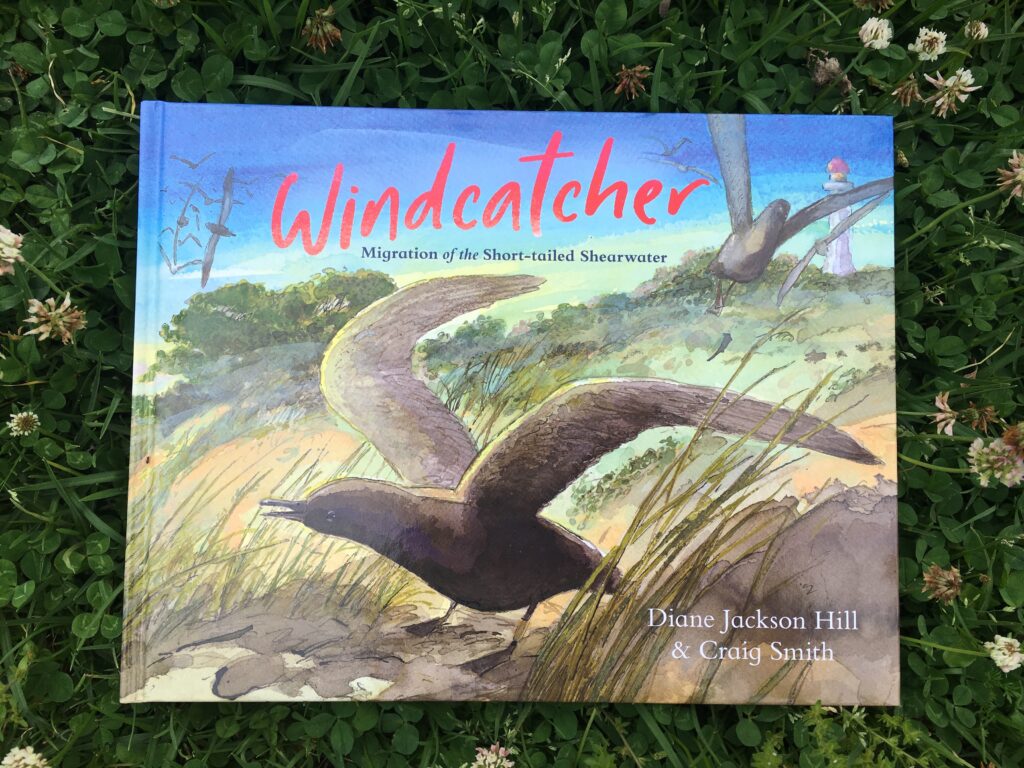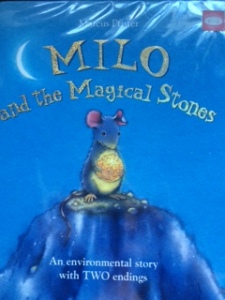From a tiny island on the edge of the Southern Ocean, a lighthouse beams.

The Short-Tailed Shearwater fly around 30,000km from their home in southern Australia to the Arctic Circle and back. They chase the warmth and sunlight, travelling these long distances to breed and feed on krill coming in from the melting summer sea ice.
Migration of animals is an amazing event that happens year after year and many of us are so unaware of the distances many animals will go to in order to survive.
This story explores the life and growth of birds numbered by local scientists as 625 and 888.
These birds have been tagged by scientists and conservationists who look out for the short-tailed shearwater, monitoring where and when they are around, their survival rates and the changes in the places they are travelling to.
The illustrations by Craig Smith capture the movement of these animals as they not only glide gracefully through the air, but also when they are tossed about by the wind.
Diane Jackson Hill describes the stages of egg laying to hatching and the harsh life the baby must endure without its mother from an early age.
This book is informative and descriptive, telling an adventure story yet informing there reader of the life of these birds.
An excellent discussion point in this story is the single page about the plastic that is ingested by thousands of birds every day. Plastic is one of the key threats to many sea birds and they mistake it for food or take it in while feeding on fish.
Despite the dangers faced by these birds, many still make the long journey and arrive back to the lighthouse on Griffiths Island off Victoria, Australia to enjoy the sunshine and lay their eggs.
I always love looking at end pages and these end pages are great. They add more detail to the story – a map of the shearwater’s journey and images of the birds as they grow from chicks to adults.
This book is an excellent resource for teachers exploring various topics such as:
- Life cycles of shearwaters.
Where do they grow up, how do their parents care for them?
- Geography with a link to migration of animals
CSIRO have some great teacher notes with cards that can be photocopied for a game of BINGO, memory or matching facts to pictures.
- Sustainability and the major problem with plastic
How can we all reduce our plastic at school and in the classroom to stop this abundance of plastic in the ocean?
- Jobs people have
How scientists and conservationists play an important role in our world.
Teacher notes are on the CSIRO website: https://www.publish.csiro.au/book/7851/#forteachers
Buy now from your local book store or online here:



